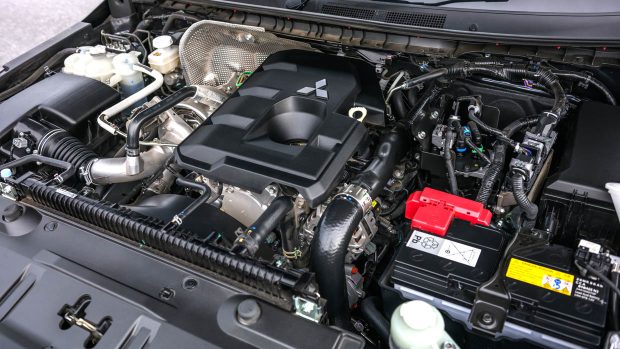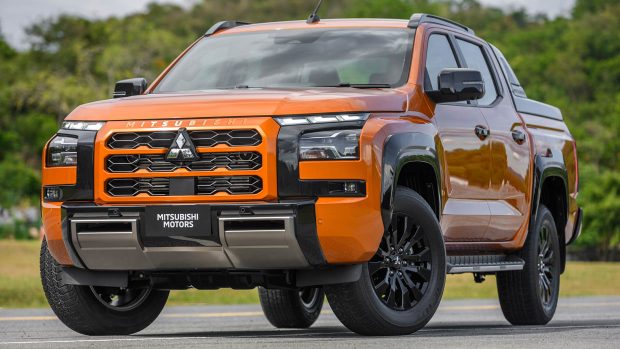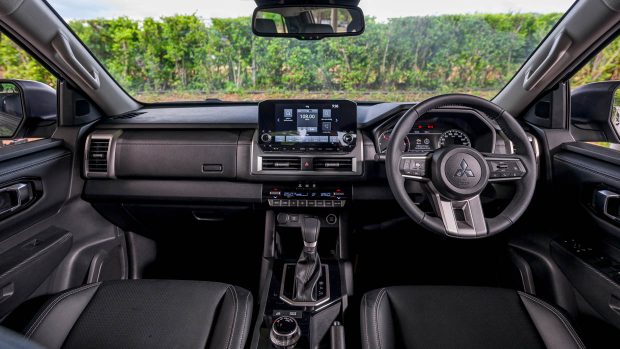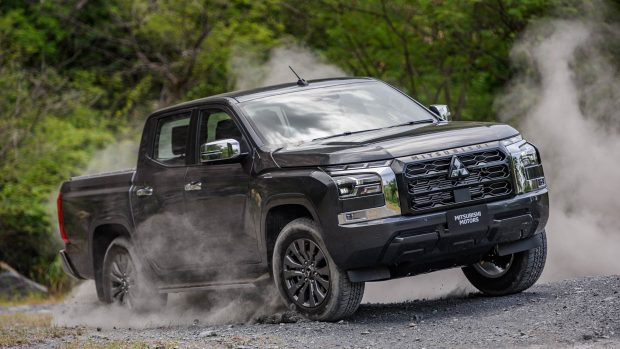-
Car Reviews
- All reviews
- Midsize SUVs
- Small cars
- Utes
- Small SUVs
- Large SUVs
- Large cars
- Sports SUVs
- Sports cars
- Vans
Latest reviews
- Car News
-
Car Comparisons
Latest comparisons
- Chasing Deals
More power, revised ladder-frame chassis, sharp looks and uprated suspension for 2024 Mitsubishi Triton
Mitsubishi has finally unveiled its sixth-generation Triton ute revealing a host of new features that take one of Australia’s favourite one-tonners into new territory.
It’s taken almost a decade for the Japanese brand to deliver the 2024 Triton, following in the tyre tracks of the fifth-gen model which launched in 2014.
The early signs suggest it has been worth the wait however, with a comprehensive overhaul which brings an uprated turbo-diesel engine, strengthened ladder-frame chassis and an entirely new exterior design.
Mitsubishi has confirmed that the new Triton will go on sale in Japan in early 2024 and will roll out into Oceania and ASEAN markets, such as Australia, during the same year.
We’ve been waiting patiently to see what powers the next Triton and it looks like our predictions were on the money.
The new model will continue to be powered by a 2.4-litre turbo-diesel engine, but this time around it has a new name – 4N16 – and more grunt. The addition of an extra turbocharger introduces a progressive twin turbo layout for the model and a “new combustion system” has helped boost power and torque outputs.
In its most muscular tune, this engine now produces 150kW and 470Nm – 30Nm less than automatic versions of the current Toyota Hilux, but matching it for power.
Mitsubishi says that other power outputs of this engine will feature in the global lineup, producing either 135kW/430Nm or 110KW/330Nm.
This engine will either be paired with a six-speed automatic transmission or a six-speed manual with a shift-by-wire setup.
Mitsubishi has also tweaked and updated the chassis of the Triton, improving torsional rigidity by 60 percent and increasing bending rigidity by 40 percent.
The new Triton features Mitsubishi’s Super Select II four-wheel drive system, which features a torque-sensing limited-slip differential. This enables 40 percent of driving force to be distributed to the front and 60 percent to the rear for both “traction performance and cornering performance,” it says.
Four driving modes will feature in 4×4 versions of the Triton: 2H, 4H, 4HLC (locked differential) and 4LLC (locked differential with lower ratio gears).
New to the Triton ute is the standard Active Yaw Control which works by applying small amounts of brake force to the inside front wheel when cornering for increased stability.
The suspension of the new Triton has also been revised, with the double wishbone front suspension now tuned for improved dynamics, along with a lighter rear leaf spring system at the rear and thicker shock absorbers.
Mitsubishi says the new Triton ute will be offered with multiple engine outputs and multiple body styles, much like the fifth-generation ute.
Three body styles will feature in the lineup globally: a double cab, a single cab and a space cab, the latter featuring extra cargo space behind the front seats.
Mitsubishi has adapted some of the Triton’s most basic – but important – features for the new model.
The rear tray is now 45mm lower when compared with the older model, making loading and unloading easier.
Mitsubishi’s new ute will now also have adaptive cruise control fitted as standard, along with advanced safety features such as forward collision mitigation, blind spot warning with lane change assist and rear cross traffic alert, to name a few.
Exact Australian specifications, timing and pricing is yet to be confirmed but is expected soon.
Latest news
About Chasing cars
Chasing Cars reviews are 100% independent.
Because we are powered by Budget Direct Insurance, we don’t receive advertising or sales revenue from car manufacturers.
We’re truly independent – giving you Australia’s best car reviews.






